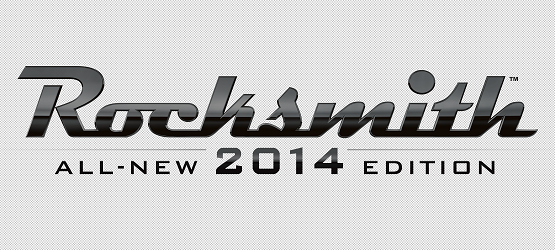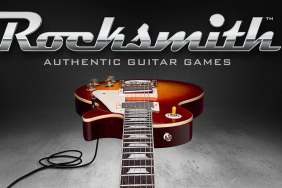Quite frankly, the shorter answer would be to talk about what isn’t changed in Rocksmith 2014. We’re not kidding when we say that we’ve rebuilt the software from the ground up this time around and strived to incorporate the feedback we’ve received from our fans. One overarching theme of our improvements and new features is a greater sense of control. This is most clear within the new on-the-fly Riff Repeater, which gives you near complete control over the way you practice riffs or full songs. This same philosophy extends to other features like our new interactive lessons, which you’ll be hearing about a little later.
This isn’t to say that we’ve removed the guidance that many fans and beginning players enjoyed. We’ve kept and improved our dynamic difficulty system while modifying our ‘Rocksmith Recommends’ algorithm so the option is still available to let Rocksmith 2014 provide a lesson plan that allows the player to learn at a more gradual pace that adapts to each user.
Will we be able to transfer the on-disc songs from the original game into 2014, or is it only the DLC that is compatible with 2014?
We’re working towards a solution to allow players to import on-disc songs from the original Rocksmith into Rocksmith 2014. Be on the lookout for more specifics and details on that in the future. Our intention is to have all songs from the original Rocksmith, not just the DLC, be compatible for Rocksmith 2014.
How will/could the AI technology used in Session Mode be used in the future, in both the games and music industries?
With the right amount of creativity applied to the technology, there is a world of possibility for this new musical AI. While other tools have previously relied on scripted and timed backing tracks for practice, our musical AI provides dynamic and responsive music into play to produce reactive and player-specific soundtracks. This is a level of immersion which hasn’t been seen in any form of media which could herald new levels of player engagement in gaming. This opens the door for a bevy of experimental, improvisational jamming to a whole new audience that might’ve previously been unable to participate.
How are you responding to the feedback that the original game did not teach techniques, such as precise finger placement, that well?
When we started developing Rocksmith 2014 we knew that there were many ways that we could improve upon our first effort. Our technique lessons are one part of Rocksmith that has been vastly improved – we’ve tripled the amount of lessons, improved the video quality, added more camera angles, and re-worked the interactive portions to provide more feedback and instruction. From the basics to difficult, advanced techniques, we’ve covered it all.
The original had a lot of load times and features buried in menus. What challenges did you face when eliminating most load times and bringing the “hidden” features to the surface?
We started development of Rocksmith 2014 with the clear objective of eliminating as much load times from the game as possible. Structuring the guts of the software to do lots of pre-loading and background loading is one of those things that become more and more difficult the later it gets implemented. By starting with a clear mandate to fix one of the biggest shortcomings of the original game we were able to make the entire Rocksmith experience faster. This, when paired with simpler menus and a re-worked structure, makes for a quicker, more straight-forward game where all features are easily accessible.
What is the one feature that the team wanted to implement into Rocksmith 2014 but won’t make it to the final product?
Support for tubas and kazoos. Really wanted to get those in, but they ended up on the cutting floor. Maybe next time. It happens on most, if not all games, where teams have more ideas than they can fit in a reasonable development time frame, so concessions have to be made. This is especially true with a smaller team like ours. But we’re pretty happy with the feature set in Rocksmith 2014 as we made huge leaps in improving the experience as well as adding in an ambitious new mode (Session Mode).
Why did you go with the decision to stay on the current gen as opposed to making it available for next gen platforms as well?
We wanted Rocksmith 2014 to be accessible to the greatest number of people, so the wide install base of current generation platforms, PC, and now Mac made it the easiest way to get our software into consumer’s hands. Rocksmith, while innovative and visually engaging, does not demand or require bleeding edge graphics cards or required massive amounts of horsepower for a great experience. We felt that we still had a lot of room to improve within the current generation without limiting ourselves.
What partners did you work with in the music industry in order to ensure that all of the tones, amp, guitar and pedal models were as accurate as possible?
With Rocksmith 2014 we’re very happy to have new partnerships with Orange, Marshall, and Eden which allows us to use their gear in-game for even more accurate tones and amp simulation. Outside of our music partners, we also have a talented audio team which deserves the credit for tirelessly working on refining and perfecting our effect modeling to get as close as we can to the original recording.
What can we expect in the way of the return and improvement of the technique training minigames from the original?
Our Guitarcade games are returning bigger and better than ever in Rocksmith 2014. We’re not yet tipping our hand about the specifics but old favorites will be returning in improved form, new games centered around new techniques have been added, and we’re even introducing longer form Guitarcade games which feature storylines, discrete levels, and even cutscenes! Much like everything else in Rocksmith 2014, the Guitarcade games have been designed with learning in mind but we wager that you’ll also find them more fun and engaging than ever before.
Is there anything else that you want gamers and musicians alike to know about Rocksmith 2014?
No matter what you thought about the original Rocksmith, Rocksmith 2014 is leaps and bounds ahead. It takes the best aspects of the original and improves upon them while introducing amazing new features. We’re not kidding when we say we took fan feedback very seriously and that we’ve been building Rocksmith 2014 from the ground up to be the definitive way to learn guitar or bass. It’s the product that we’ve wanted to make from the start. We can’t thank our fans enough and it’s their support that helped make possible. Stick around, because we’ve still got plenty of awesome things to show you!








